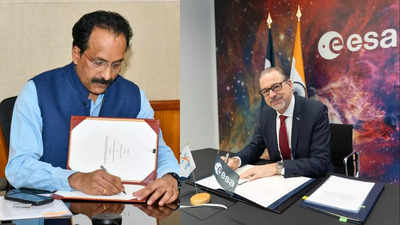Bangalore: Strengthening its internationalization space cooperation In addition, the Indian Space Research Organization (Indian Space Research Organization)Yisro)and European Space Agency (ESA).
According to ISRO, the collaboration establishes a comprehensive framework for joint activities in the following areas: human space explorationwith special emphasis on astronaut training programs and research initiatives. Under the agreement, the two agencies will work together on experimental development and integration, including use of ESA’s facilities on the International Space Station (ISS). The partnership also includes the conduct of human and biomedical research, as well as coordinated education and outreach activities.
The immediate focus of this collaboration will be on the upcoming Axiom-4 Missionwhich will have an Indian Space Research Organization (Isro) astronaut and a European Space Agency (ESA) astronaut as crew members. “These institutions are already collaborating to implement experiments designed by India’s chief researcher on the International Space Station. In addition, plans for India to participate in European Space Agency’s human physiological research and technology demonstration experiments are underway,” Isro said.
Somanath highlighted ISRO’s strategic roadmap for manned space activities and pointed out that India recently approved its own space station, Bhatia Antrikesh Station (BAS), opens up new possibilities for developing interoperability between manned space platforms. ESA Director General Josef Aschbach stressed the importance of the agreement as a basis for future cooperation. Isro added: “…In addition, participation in ESA’s human physiology research, technology demonstration experiments and joint educational outreach activities is also sought.”
Earlier this month, ISRO and ESA signed a Technology Implementation Plan (TIP) to enable ESA to provide critical ground tracking support to India’s Gaganyan mission. Support provided through the Technology Implementation Plan will ensure uninterrupted data flow and communications to the orbital module, which is critical for monitoring and conducting orbital operations.
These agreements are not stand-alone but are a continuation of a long-standing relationship between the two space agencies. The two have a proven track record of supporting each other on multiple successful space missions.








